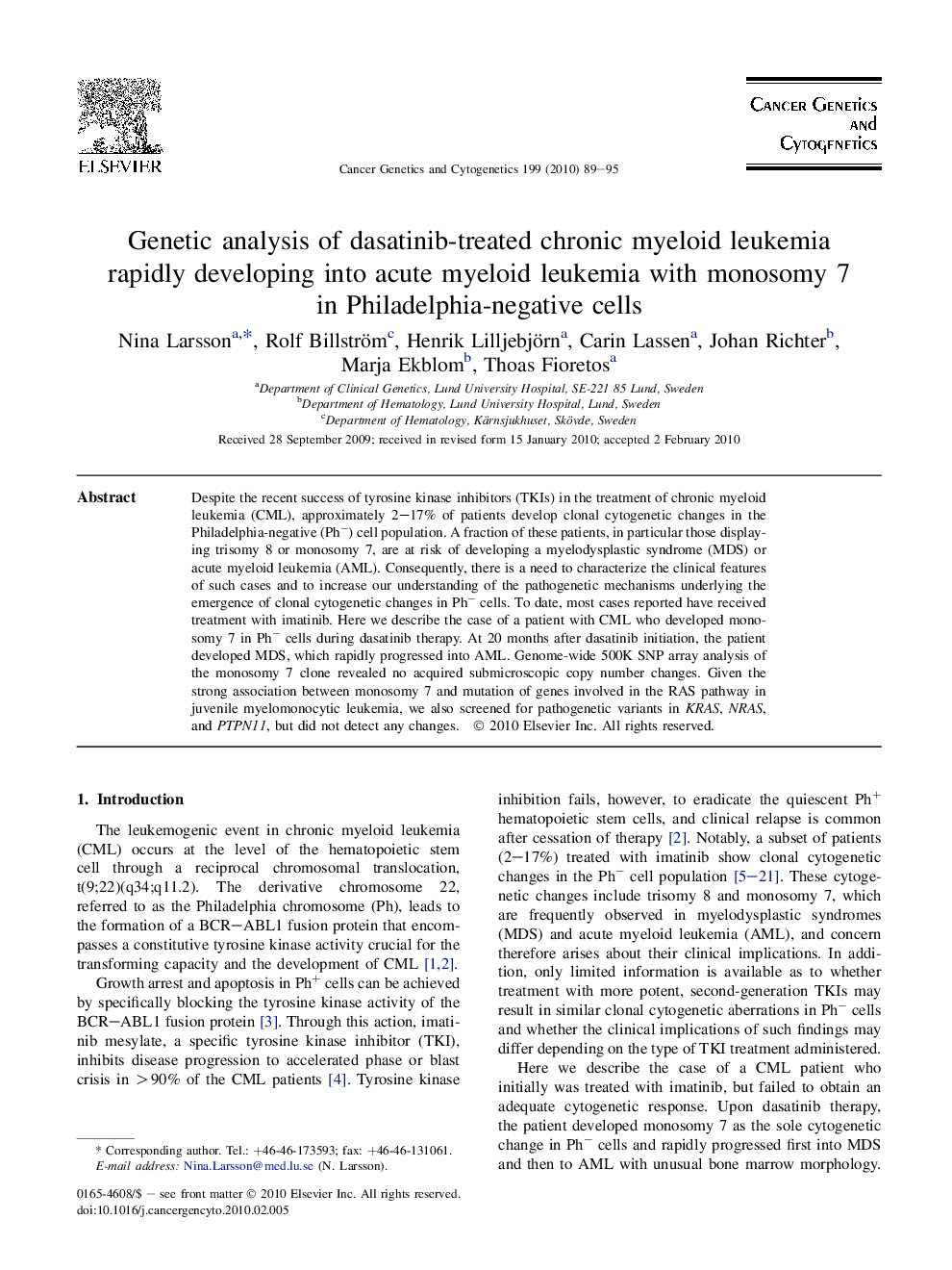| کد مقاله | کد نشریه | سال انتشار | مقاله انگلیسی | نسخه تمام متن |
|---|---|---|---|---|
| 2110830 | 1083948 | 2010 | 7 صفحه PDF | دانلود رایگان |

Despite the recent success of tyrosine kinase inhibitors (TKIs) in the treatment of chronic myeloid leukemia (CML), approximately 2–17% of patients develop clonal cytogenetic changes in the Philadelphia-negative (Ph−) cell population. A fraction of these patients, in particular those displaying trisomy 8 or monosomy 7, are at risk of developing a myelodysplastic syndrome (MDS) or acute myeloid leukemia (AML). Consequently, there is a need to characterize the clinical features of such cases and to increase our understanding of the pathogenetic mechanisms underlying the emergence of clonal cytogenetic changes in Ph− cells. To date, most cases reported have received treatment with imatinib. Here we describe the case of a patient with CML who developed monosomy 7 in Ph− cells during dasatinib therapy. At 20 months after dasatinib initiation, the patient developed MDS, which rapidly progressed into AML. Genome-wide 500K SNP array analysis of the monosomy 7 clone revealed no acquired submicroscopic copy number changes. Given the strong association between monosomy 7 and mutation of genes involved in the RAS pathway in juvenile myelomonocytic leukemia, we also screened for pathogenetic variants in KRAS, NRAS, and PTPN11, but did not detect any changes.
Journal: Cancer Genetics and Cytogenetics - Volume 199, Issue 2, June 2010, Pages 89–95